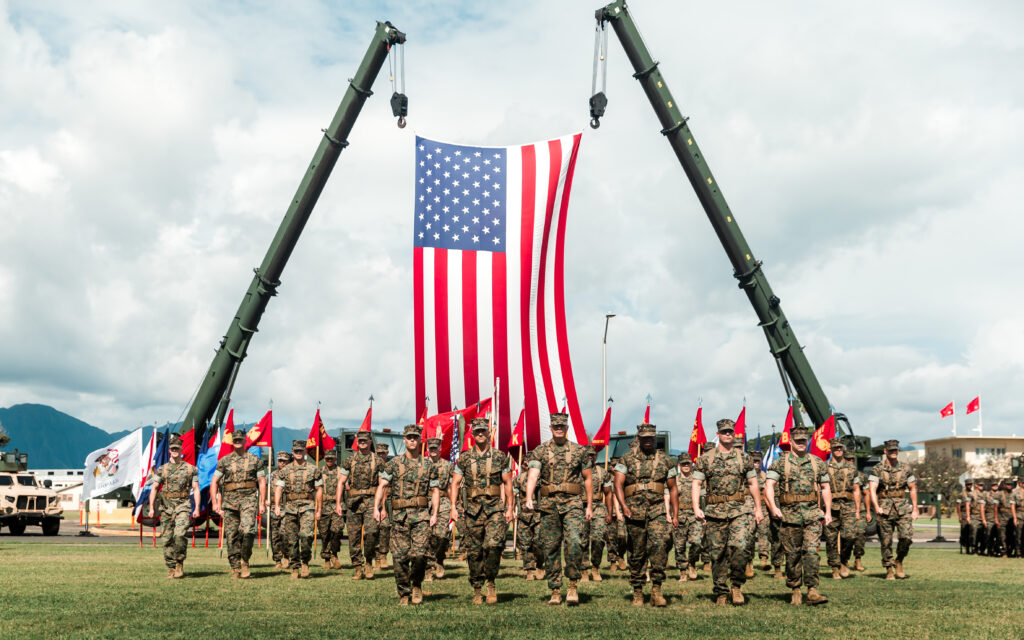
ARLINGTON, Va. — The U.S. Marine Corps has taken another step in its ambitious force redesign to contend with near-peer militaries like China and Russia in the 21st century: Creating the first Marine Littoral Regiment.
After more than a year of planning, the 3rd Marine Regiment was redesignated the 3rd Marine Littoral Regiment in a ceremony at Marine Corps Base Hawaii, where the new regiment will continue to be headquartered.
While the 3rd MLR is not expected to be fully operationally capable for at least a year, its establishment demonstrates progress in the Marine Corps’ Force Design 2030 modernization effort, a key priority of Marine Corps Commandant David Berger’s 38th Commandant’s Planning Guidance.
“Marines on the leading edge of change is nothing new,” Maj. Gen. Jay Bargeron, commanding general of 3rd Marine Division, told attendees at the May 3 ceremony. “We are honing our capabilities to integrate and coordinate joint and combined fires and effects, extending the reach of and providing more options to our forces.”
The Marines’ evolving Expeditionary Advanced Base Operations concept envisions littoral operations by specialized mobile, low signature units within larger distributed maritime operations areas.
Marine Littoral Regiments will be uniquely designed to maneuver and persist inside a contested maritime environment. The MLR is organized, trained and equipped to support sea control and sea denial operations as part of a larger naval expeditionary force integrated with the joint force and allied and partnered forces.
Equipped with rockets, missiles and other long range fires, as well as sensors like the Ground/Air Task Oriented Radar, the MQ-9A Reaper unmanned aerial vehicle for extended range intelligence, surveillance and reconnaissance, long-range unmanned surface vessels and light amphibious warships to increase mobility in the littorals, EABO units will control access to choke points while limiting an adversary’s ability to target them.
The Marine Corps’ second in command, Assistant Commandant Gen. Eric Smith, also attended the re-designation ceremony. Before leaving Washington for Hawaii, Smith told a Feb. 28 reporters’ roundtable the Marines are “equipping, training and organizing [the MLRs] so they’re able to deploy tonight — and I mean tonight — to do what they need to do.”
The new MLR will be divided into three elements: a littoral combat team made up of a one infantry battalion equipped with a ship-killing missile battery, an anti-aircraft battalion and a combat logistics battalion. Unlike traditional Marine regiments that deployed with three large battalions, the new MLR will operate with much smaller groups, between 75 and 100 Marines, Smith said.
Plans call for two more infantry regiments, the 4th and 12th Marines to be converted to MLRs by 2030, but Smith told reporters the process could take longer than the 3rd MLR’s conversion did based on lessons learned going forward.
- Shall We Play a Game? Winning Isn’t the Point, Experts Say - April 5, 2023
- U.S. Goal: Maintaining Extended Presence in Arctic’s Harsh Environment - April 4, 2023
- Joint, Combined Exercise Shows Marine Littoral Regiment Idea is on ”Right Track’ - February 24, 2023






